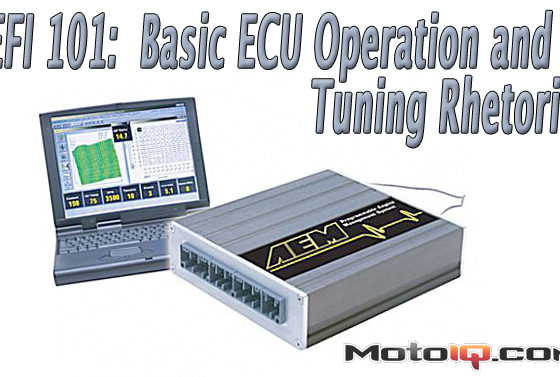,
How it’s Done
 |
| We relocated an Evo’s battery to the trunk. An Evo is a very heavy car that tends to understeer at the limit and can use some front end weight reduction. For this Evo we mostly wanted to gain space to run throttle body hardpiping that was less kinked in the area of the throttle body and the factory battery was in the way. We ditched the stock battery in favor of a Braille B14115C. This battery has a lightweight carbon fiber casing and weighs 11 lbs, making it one of the lightest batteries that can safely run a fully equipped street car. It is a whopping 30 lbs lighter than the stock battery. |
Many companies make and sell battery relocation kits. You can simply purchase and use one of these. There is a caveat though. Many kits use flimsy stamped steel or thick formed wire battery mounts and brittle plastic boxes for there kits. Unfortunately some kits offered by famous and reputable companies are made like this. In an accident, the heavy battery can easily deform or break these mounts and bust out of a fragile battery box becoming a 40-50 lb missile filled with lead and concentrated sulfuric acid hurtling around the inside of the car, not good. This sort of thing can kill you deader than a doornail if it hits you in the wrong spot. Getting hit anywhere on your body is not going to tickle. A loose battery can strike you with melon crushing force. We have seen this happen several times in racing accidents.
 |
| Braille has a really cool remote battery shutoff kit. You can kill the battery power via a remote, just the thing for extra security and to stop battery drain in cars that are stored. The shutoff also contains a circuit breaker that kills power in case of a short circuit. If the battery starts to be drained, it also disconnects the battery before it is totally discharged. |
For this reason we recommend heavy duty billet type mounts and the use of gell cell type batteries or full metal enclosures. These must be bolted to solid parts of the chassis with grade 5 bolts and large fender washers or preferably backing plates if the battery is anywhere near the drivers compartment. This includes the trunk if there is not a solid welded in bulkhead between the trunk and the driver’s compartment. Remember a battery can generate a sledge hammer like blow of hundreds of pounds of force in a crash and you have to choose or build mounts with this in mind. A crash can generate impulse loads in the 12 G or more range. Multiply this by 50 lbs and you can see that the mass of a battery can easily create a load of 600 lbs!
 |
| We bolted the battery solidly to our Evo’s trunk floor using Braille’s billet mount. In a crash a battery can generate several hundred pounds of force so the mounting system must be robust for safety. Weak wire type and flimsy sheetmetal mounts are a no no even though many popular battery relocation kits have these sorts of mounts. |
It is also important to check the rules of whatever racing sanctioning body that you might run under before starting a batter relocation project. The NHRA requires metal battery boxes vented to the outside of the car unless a dry cell type battery is being used. The NHRA also requires an external accessible rear mounted remote battery shut off switch for trunk mounted batteries. Most road racing associations require metal boxes unless the battery is a sealed dry cell type and externally mounted cutoff switches marked with a triangular standardized label.
 |
| We got these eye type terminal ends from our local marine supply store. For wire we used 0 gauge welding cable for low resistance. Here Howard Watanabe of Technosquare crimps the terminal end. |
 |
| We used this crimping tool to get a good crimp. Proper tools give professional results. |
 |
| We finished off the cable ends with heat shrink tubing which can be purchased at any electronics supply house. |
Because of the hazard issues with normal lead acid batteries, mainly how they tend to emit flammable hydrogen gas and spew sulfuric acid, it’s a good idea to go with a sealed racing dry cell battery. It also makes it easier to comply with racing sanctioning body’s rules for venting. Dry cell batteries have a dry paste instead of liquid sulfuric acid electrolyte which is less likely to splash and spill around and burn you up like the blood of the beast in Alien. Dry cells do not emit Hindenburg burning hydrogen gas either. Hawker Energy, Braille and Odyssey make lightweight compact dry cell batteries and Optima makes full size dry cell batteries. Most of these companies make sturdy billet or sheetmetal type mounts suitable for proper mounting.
 |
| We routed the cable under our Evo’s chassis using the factory mounts for the fuel and brake lines to guide and protect the cable. The cable is in the middle between the brake and fuel lines. This is a very sanitary, well protected factory looking installation. |



